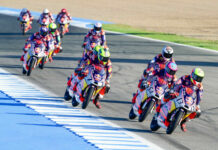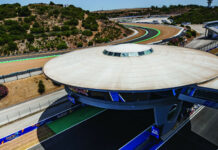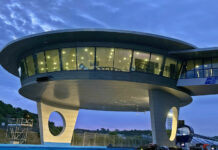UC Berkeley study shows lane-splitting motorcyclists are safer in traffic
PICKERINGTON, Ohio — A new study by the University of California Berkeley shows that motorcyclists who split lanes in heavy traffic are significantly less likely to be struck from behind by other motorists and are less likely to suffer head or torso injuries, the American Motorcyclist Association reports.
Researchers, led by Dr. Thomas Rice of the Safe Transportation Research and Education Center (SafeTREC), reviewed nearly 6,000 motorcycle-involved traffic collisions between June 2012 and August 2013, including 997 in which the riders were splitting lanes at the time of the crash. Click here to download the report: http://www.ots.ca.gov/pdf/Publications/Motorcycle-Lane-Splitting-and-Safety-2015.pdf.
“Perhaps one of the most dangerous situations for any motorcyclist is being caught in congested traffic, where stop-and-go vehicles, distracted and inattentive vehicle operators, and environmental conditions increase the risk of physical contact with another vehicle or hazard,” said Wayne Allard, AMA vice president for government relations. “Reducing a motorcyclist’s exposure to vehicles that are frequently accelerating and decelerating on congested roadways can be one way to reduce rear-end collisions for those most vulnerable in traffic.”
Among the U.C. Berkeley findings:
- Lane-splitting is safe if done in traffic moving at 50 mph or less, and if motorcyclists do not exceed the speed of other vehicles by more than 15 mph;
- 69 percent of lane-splitting motorcyclists were exceeding the traffic speed by 15 mph or less; speed differentials up to 15 mph were not associated with changes in the frequency of injury;
- Compared to riders who were not splitting lanes, lane-splitting motorcyclists were markedly less likely to suffer head injury (9 percent vs. 17 percent), torso injury (19 percent vs. 29 percent) or fatal injury (1.2 percent vs. 3 percent);
- Lane-splitting riders were significantly less likely to be rear-ended than non-lane-splitting riders (2.6 percent vs. 4.6 percent);
- Lane-splitting motorcyclists were more likely to be wearing a full-face helmet than other motorcyclists (81 percent vs. 67 percent);
- Compared to other motorcyclists, lane-splitting riders were more often riding on weekdays and during commuting hours, were using better helmets and were traveling at slower speeds;
- Lane-splitting riders were less likely to have been using alcohol.
“These new findings bolster our position that responsible lane-splitting is a safe and effective riding technique that can be beneficial for riders and motorists alike,” Allard said. “Lane splitting eases traffic congestion by taking motorcyclists out of the line of cars and trucks. And the practice increases safety by allowing motorcycle riders to avoid the risk of rear-end collisions in stopped or slow-moving traffic.”
Motorcycle lane splitting is a common practice in many countries throughout the world – particularly in the highly urbanized areas of Europe and Asia. Long recognized as a way to alleviate traffic congestion and reduce the risk of crashes, the practice nevertheless remains largely prohibited in the United States, with California currently being the exception.
The UC-Berekley study is the latest to examine crash data related to lane splitting and follows a similar report issued in October 2014 (see www.americanmotorcyclist.com/news/14-10-24/California_studies_highlight_advantages_of_responsible_lane_splitting.aspx).
“We want to remind motorists that permitting lane splitting is not the same as requiring it,” Allard said. “Where it is allowed, lane splitting is an issue of choice, and formalizing the practice will give riders and law enforcement alike clear guidelines for its responsible practice.”
The AMA formally endorses responsible lane splitting and will continue to assist groups and individuals working to bring legal lane splitting and/or filtering to their states.
More information about the AMA’s position on lane splitting can be found here:www.americanmotorcyclist.com/Rights/PositionStatements/LaneSplitting.aspx.
Founded in 1924, the AMA is a not-for-profit member-based association whose mission is to promote the motorcycle lifestyle and protect the future of motorcycling. As the world’s largest motorcycling rights and event sanctioning organization, the AMA advocates for riders’ interests at all levels of government and sanctions thousands of competition and recreational events every year. The AMA also provides money-saving discounts on products and services for its members. Through the AMA Motorcycle Hall of Fame in Pickerington, Ohio, the AMA honors the heroes and heritage of motorcycling. For more information, visit www.americanmotorcyclist.com.
Not a member? Join the AMA today: www.americanmotorcyclist.com/membership/join






